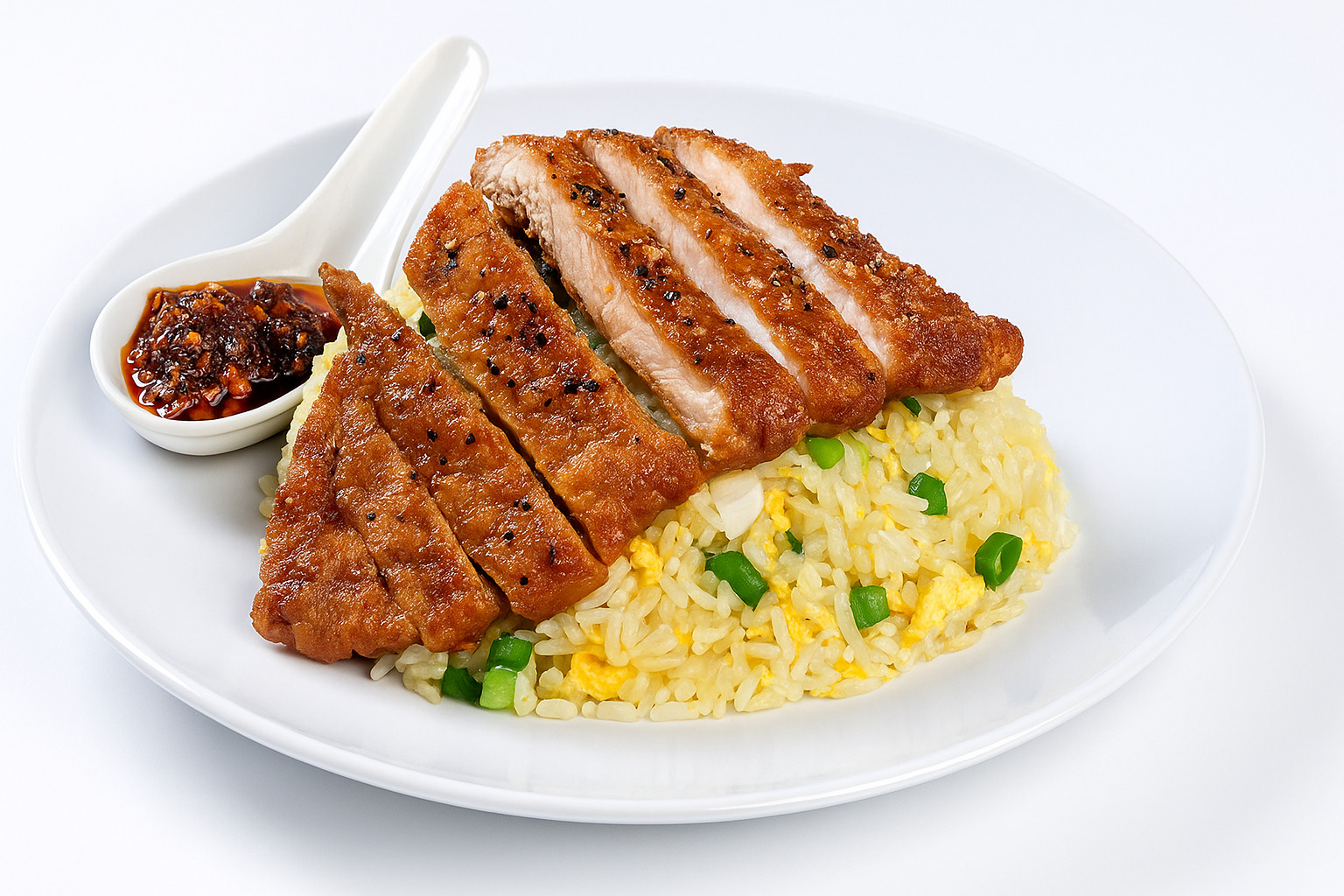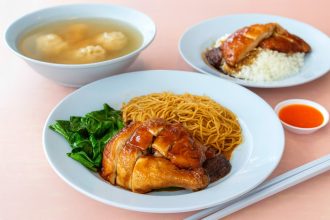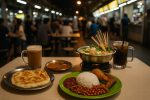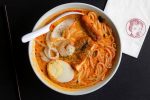Can a humble plate of fried rice carry the weight of fine-dining experience? For Chef Wang Jingjun, the answer is found sizzling in a hot wok at Beo Crescent Market & Food Centre. The Shandong-born, Singaporean chef turned decades of culinary skill into a hawker stall that rapidly gained attention for its rich flavors and affordability.
From Fine-Dining to Hawker Heritage
Chef Wang’s background reads like a polished resume. He spent three years refining his skills at Shang Palace in Shangri-La Singapore, where sambal-infused dishes shaped his cooking. In 2018, he worked at Din Tai Fung, known for its clean, precise interpretations of traditional Chinese flavors.
By May 2021, Wang stepped away from air-conditioned kitchens and launched Chef Wang Fried Rice at stall #01-71 in Beo Crescent. At 41, he wasn’t new to running his own show. His first F&B attempt was a zi char stall in Sengkang that lasted two years before high rent forced its closure. This time, he focused on one thing: fried rice.
Why Fried Rice?
Chef Wang chose fried rice because it’s widely loved, versatile, and straightforward enough to execute at scale without sacrificing quality. By channeling his fine-dining know-how into this simple dish, he managed to stand out in a crowded hawker scene.
The result: restaurant-style fried rice served fast, affordable, and full of character.
Signature Fried Rice Variants
The menu reflects Wang’s past, mixing influences from Cantonese and Taiwanese cuisine with his own preferences.
1. Egg Fried Rice (S$4)
A no-frills entry dish with enough wok hei to impress. The fluffiness of the Taiwanese pearl rice—known for staying separate even after stir-frying—is a critical element here.
2. Pork Chop Fried Rice (S$6.80)
Arguably the stall’s crowd-puller. The pork chop is marinated in a blend of black pepper and five-spice, grilled to juicy perfection, and served atop the classic egg fried rice base.
3. Shrimp Fried Rice (S$6.80)
This version leans closer to the Din Tai Fung school of flavor, light on grease but rich in texture. Shrimp is evenly distributed for consistency in every bite.
4. Abalone Fried Rice (S$10)
Premium without being extravagant, this dish features small canned Australian abalones. It targets those willing to spend slightly more for a seafood-forward variation.
5. Sambal Variants (+S$0.50)
The sambal—a homemade blend of belacan and dried chilies—gets tossed directly into the wok. This twist isn’t found in Din Tai Fung’s playbook. It’s a personal nod to Chef Wang’s Shang Palace roots, adding complexity and a bold spicy kick.
6. Tomyum Fried Rice
One of the latest additions. It adds a Thai touch, with citrusy aromatics and heat layered into the fried rice structure.
Why It Works
Chef Wang Fried Rice didn’t rely on gimmicks or marketing. The stall succeeded because:
- Technique was visible in the execution.
Each grain retained its integrity. No clumps. No grease pools. Just wok-charred, separated grains with consistent texture. - Pricing felt honest.
Even the most premium dish stayed within reach of daily diners. - Customer loyalty was rewarded.
Seniors enjoyed a S$0.50 discount per plate, an understated but appreciated gesture in a price-sensitive setting.
The Reception
From opening day, queues stretched to two hours long. Word spread quickly through food blogs and social media posts. Diners came for nostalgia, taste, and affordability. Some reviews called the sambal version a standout—offering a bolder and more layered flavor than other variants.
Not every plate pleased every palate. Some found the plain egg fried rice drier than its Din Tai Fung counterpart. A few said the pork chop could be more tender. Still, the overarching sentiment leaned positive. For under S$7, it felt like an excellent value.
Expansion Beyond Beo Crescent
Success brought growth. By late 2021, a second franchised outlet opened in Potong Pasir, operating inside a kopitiam beside a mala xiang guo stall owned by the same franchisee. Chef Wang promised to personally train the chefs and occasionally supervise operations, though his main focus remained at Beo Crescent.
Later, outlets in Simei and Buangkok Hawker Centre followed suit, with Buangkok opening in late 2023. These expansions coincided with a rising trend of fine-dining chefs entering the hawker space, trading linen-clad tables for stainless steel worktops.
As the buzz settled, the original Beo Crescent location saw shorter lines. But this didn’t reflect a drop in quality—rather, it marked a shift in the fried rice landscape, as more players entered the scene mimicking the Din Tai Fung format.
Lessons from Chef Wang’s Story
Chef Wang Fried Rice isn’t just another stall in Singapore’s hawker grid. It’s a case study in how skill, pricing, and product focus can turn a simple dish into a sustainable business.
Here’s what helped it thrive:
- Simplicity with skill – No bloated menu, no shortcuts.
- Understanding the local palate – Sambal was more than a condiment; it was a memory trigger.
- Respect for price-point – The food may taste restaurant-quality, but the bill always read hawker.
The Bigger Picture
Singapore’s food culture values authenticity and accessibility. Chef Wang Fried Rice manages both without compromising technique. Every plate tells a story: a chef who once plated delicate Cantonese dishes now serves working-class favorites with the same attention to detail.
Chef Wang didn’t just bring fried rice. He brought depth, memory, and skill to a dish everyone thought they knew.











